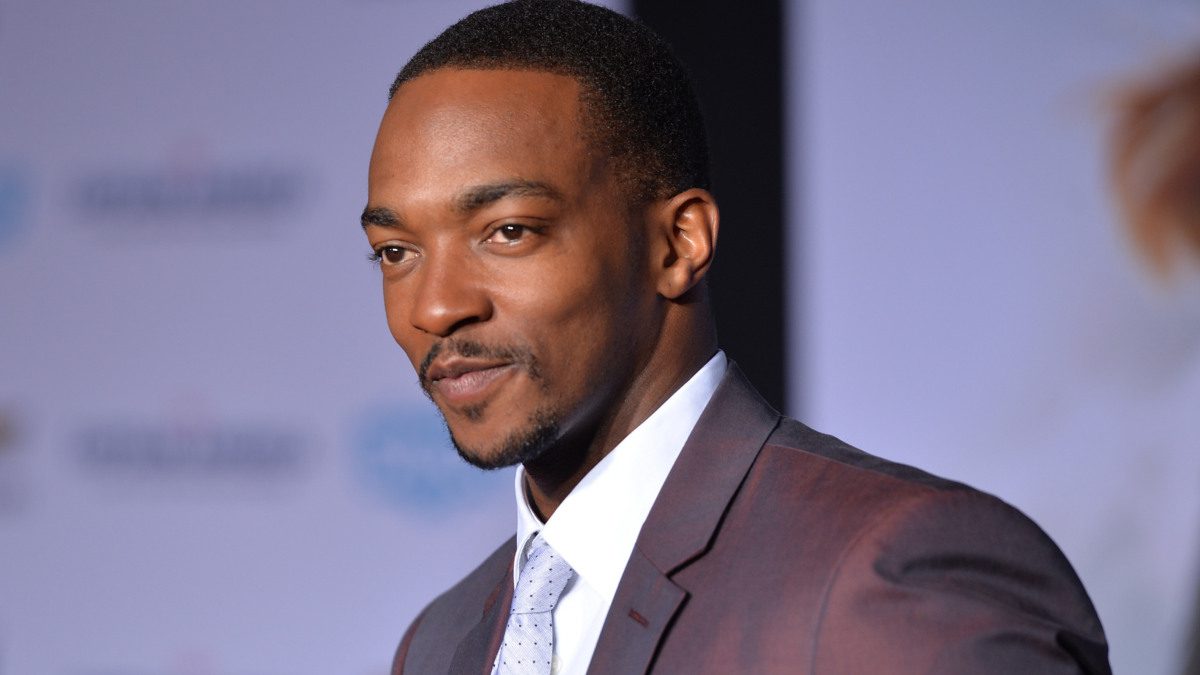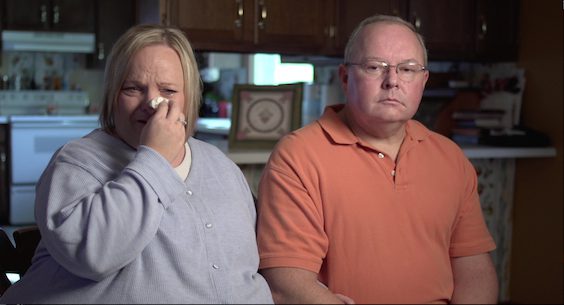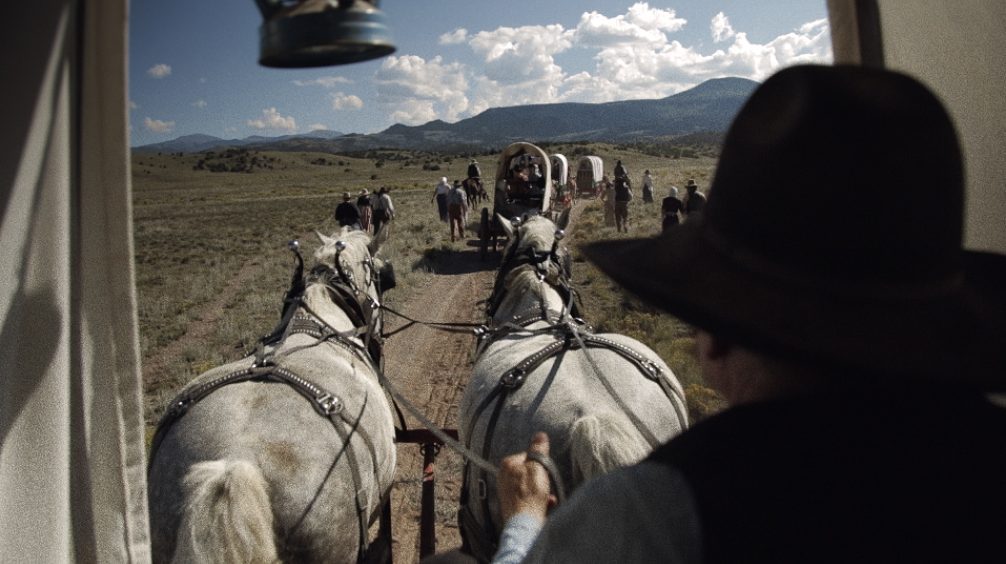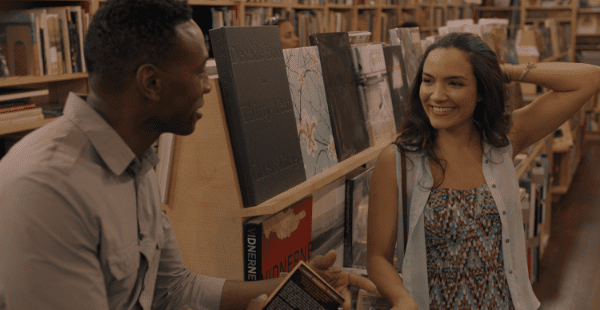When Will Anthony Mackie Stop Having to Play Second Fiddle?
A common trajectory for actors in Hollywood is starring in independent movies that gain traction and launch them into more meaty and prominent roles. One particular actor seems to be destined for this track, yet still isn’t quite there. This is Anthony Mackie. Over the course of this piece, I will examine the various characters Mackie has played, and ask why he is still finding himself in these kinds of roles.
First, let’s get this out of the way: Anthony Mackie is extremely talented. This can often be a reason why actors don’t land roles, but he is far from being a one-note actor. If you need proof, watch his final scene in The Hurt Locker. Six years later I still remember the emotion and authenticity from that moment. The fact that he wasn’t even mentioned as an Oscar contender that year is ludicrous.
To see the issue of his representation I’m talking about, take one particular example: Pain & Gain. Look at the movie’s main poster: 3 buff movie stars:
(Courtesy of IMP Awards)
Take a closer look: two headlining names, Mark Wahlberg and Dwayne Johnson. Where’s Anthony Mackie’s name? He’s right next to them, he’s starred in just as many acclaimed movies as his co-stars and isn’t even included on the poster. He may not have as big of a commercial presence as the former, but he is in the movie just as much. I would expect to have his name on the poster by Wahlberg and Johnson, especially if his face is. Some posters didn’t even bother including his image.
He started his career going to Julliard and performing on Broadway (again confirming his acting chops,) and got his first big break as the main antagonist to Eminem in 8 Mile. The running theme is that he so frequently plays the most prominent supporting role to another actor. Let's take a closer look at Mackie’s most well-known filmography. In Notorious (2009), Mackie is Tupac in a film about Biggie. Indie drama Repentance has Mackie out-shadowed by Forest Whitaker. Real Steel features Mackie as the good friend of the protagonist Hugh Jackman. The aforementioned Pain & Gain has Mackie behind Johnson and Wahlberg. The Hurt Locker, arguably the film that propelled Mackie the furthest, features him as the largest supporting role to Renner. In star-studded films Million Dollar Baby and Gangster Squad, Mackie plays a small supporting role. And most recently, he has taken on the role of The Falcon in Marvel Universe entries Captain America: The Winter Soldier and Avengers: Age of Ultron. So far, his role has been no more than a glorified sidekick to Chris Evans.
(Captain America: The Winter Soldier. Courtesy of HitFix)
Looking at this list, I recall an incredible range of performances that fits in seamlessly to each film. His chameleon nature has landed him roles in big movies but hasn’t elevated him to star status. Despite the fact that he has starred in all these movies, the masses don’t recognize his name. By the list of movies alone (not to mention a few more,) you would assume this is the resume of a well-known star. Mackie has modestly starred in 2 Best Picture winners, 2 Marvel movies (and counting), and a slew of action movies and dramas, but still is not even close to a headlining name.
There are three movies in which Mackie is billed as the leading actor. Unfortunately, they left more to be desired. Spike Lee’s She Hate Me was a critical flop, Night Catches Us was a Sundance alum turned commercial flop, and Crossover was a critical and commercial flop. I stand by the fact that these aren’t a strong enough test of how he can carry a movie.
So why has this been the case? It could be that Mackie is suffering from the lack of roles for non-white actors, especially in lead roles. It also could be that his versatility that has landed him so many roles has made it difficult for audiences to keep up with him, unlike Samuel L. Jackson or Idris Elba, whose roles have more similarities to one another. The truth may be a combination of both. With few leading roles for non-white actors, Mackie has been able to capitalize on supporting roles in big projects because he stands out so much. The filmography reflects an actor who has a great agent getting both versatility and big budget (presumably well paid) roles. It still remains irritating that this hasn’t allowed for him to fully break out.
(The Hurt Locker. Courtesy of Movpins)
However, there is good news that lies ahead. Mackie is in talks to star in a new film from Justin Simien, who directed the Sundance breakout Dear White People. The film, Make a Wish, is a comedy, and for better or worse will be a major test for both the star and the director. How much money it makes will affect how much their careers will be boosted. Here’s hoping that Make a Wish, as well as other future prospects, will allow general audiences to see the true range and ability that Anthony Mackie possesses that has managed to go unnoticed thus far.
Review: 'Mad Max: Fury Road'
Early into the film, Nux (Nicholas Hoult) screams the film’s tagline with a cultish insanity: “What a Lovely Day!” Indeed, there isn’t a better way to summarize the visceral, unconventional, deranged journey that unfolds over the course of two jam-packed hours in Mad Max: Fury Road.
An important note for potential viewers of this film is that despite the fact that it is a reboot of an existing character and world, Mad Max: Fury Road requires no preface or introduction. This is a film meant to be seen by new audiences, in direct contrast to so many of the reboots which are more a ploy of nostalgia for fanboys of properties prior to 1990. I have no idea to what degree the Mad Max films were popular (I have seen the first two and never felt a strong connection), but we all know they weren’t the top franchise of the 1970’s or 1980’s. Yet alas, visionary director George Miller, who has directed every film in the series, is back to tell more Max stories for an entirely new audience. And he doesn’t hold back.
Without a second to waste, we enter the world of Max Rockatansky (Tom Hardy, more on him later) from the very first shot, and it’s a nasty, fully realized post-apocalypse. Dystopias are all the rage in the wake of The Hunger Games, but none of them have nearly the level of detail and sophisticated madness that Fury Road displays. A major point of praise is that so much of the story is displayed through the visuals. We never are explicitly told what the societal issues are, instead we are shown them. The same goes for characters, plot points, you name it; this is an exercise in using dialogue to a bare minimum in favor of visual spectacle. The level of detail sets the bar extremely high for any future film trying to capture a futuristic world. This is apparently the biggest budgeted R-rated film since Terminator 3, and it certainly is on display. Much of the imagery is nasty and disturbing, and therefore successfully immerses you in the world. Today when we see blockbusters they tend to feel saturated, safe, and appealing to just about everyone. Nothing is easy to digest about Fury Road: it is a wild ride of non-stop mayhem and in no place feels restrained. In other words, it is an absolute blast.
Nothing is easy to digest about Fury Road: it is a wild ride of non-stop mayhem and in no place feels restrained. In other words, it is an absolute blast.
From a technical standpoint, every element matches the best work I’ve seen. Production design, make-up, and costumes are all so fully realized that you feel as if you’re seeing a story just by looking at what the characters are wearing. This makes the storytelling extremely efficient because we learn so much backstory just by the visuals. One of the most exciting elements that every article is partial to mention is the stunt work. According to the director, 80% of what is onscreen is practical effects. In an era we live in CGI has removed the element of “holy shit” from so many movies because there isn’t any sense of authenticity. Seeing some of the ludicrous stunts that are pulled off so magnificently is an incredible treat. The pacing of the film, while still remaining a nonstop thrill ride, builds nicely as the film continues to get progressively bigger without losing its genuine feeling. From time to time the film cuts to black to break up the sequences, and I found myself catching my breath each time.
When it comes to big-budget blockbusters, this is what we should be asking for. With the amount of money that gets poured into these movies, seeing Mad Max is a reminder of the insanely good results that can be produced. I cannot recommend the experience enough and hope that it is something that others see the joy in as well.
It’s just as relevant to mention how well utilized all of the principle cast is. This isn’t a movie grounded in flashy performances, but every character manages to say so much with so little. Tom Hardy may be my favorite working actor at this point, choosing such a wide range of daring projects and bringing so much poise to each one. There is an interesting parallel between this film and Locke, Hardy’s film from last year that was one of my year-end favorites. In that film, Hardy is the only actor seen on screen and the entire runtime he is driving in a car talking on the phone. It’s phenomenally pulled off. This time around, once again Hardy is perpetually driving the entire time, and both films deal with great themes about chaos and control, yet this one is the opposite in terms of scale. Not only can Hardy carry a movie on his back, he picks fantastic work as well. But this isn’t just his movie. Charlize Theron is just as much the lead this time around as Imperator Furiosa, and true to form, she is the most badass female lead you could possibly conjure. Pinning the two together is like watching two rivals forced to work together, and the dynamic is top tier. I’ve heard about articles examining an underlying theme of dismantling the patriarchy. You’ll see early on that Furiousa (and perhaps the film itself) have this on their mind for the entire thrill ride. Miller even consulted Eve Ensler, writer of The Vagina Monologues, to craft his dimensional female characters, another unfortunate anomaly in the more conventional blockbusters.
One last piece of praise is that because the film goes at you very fast, and the story is so richly detailed, it felt like I wasn’t able to capture everything along the roller coaster. In this case, that just makes me want to watch the film again. Incredible CGI-minimal action sequences, top-notch production design, convention-defying structure, and story, if you haven’t already gathered, this is not just another film. It is a towering feat in blockbuster filmmaking and a reminder of what movies aim to be. I cannot recommend it enough.
Mad Max: Fury Road opens in theaters everywhere today.
https://www.youtube.com/watch?v=hEJnMQG9ev8
Director Meryl Goldsmith on 'The Syndrome'
Before The Syndrome screened at this year's Newport Beach Film Festival, we got the chance to talk to the film's director, Meryl Goldsmith, who collaborated with investigative reporter Susan Goldsmith to bring forth a documentary about shaken baby syndrome. Together, they bring to light the controversial theory that shaken baby syndrome may just be a label that hospitals and social workers accuse alleged child-abusing parents of if their child has an injury similar to that of a shaken baby projected injury. The result is thousands of parents, claiming innocence, thrown behind bars away from their families, justly or not. In our exclusive interview, Goldsmith talks about her passion for investigative journalism, the controversy surrounding this topic, and the anticipated reaction from the public after the film's release. We begin:
TO SEE THAT THERE IS MORE INFORMATION THAT WE AS THE PUBLIC DON'T KNOW ABOUT SHAKEN BABY SYNDROME IS FASCINATING.
When Susan [Goldsmith, Award-winning investigative reporter] told me about it I was very skeptical about it, and so was she when she first heard there was any doubt about it. I think it's all so engrained in us now to never shake and of course that's a method we agree with, but the question is not whether or not to do that, it's actually has this ever even been happening? As said in the film, in 1997 this was mythology. I thought that was pretty fascinating.
WHAT DREW YOU TO THE PROJECT IN THE FIRST PLACE?
I called Susan to potentially collaborate on one of my next films and she told me about the shaken baby story and that they weren't going to run at the Oregonian newspaper, where she worked at the time. I feel like investigative journalism is very important and needs to stay alive so I thought we could do it as a film. It was really heartbreaking to hear about this happening to all these families all across the country. I wanted to figure out a way to break this story with a film.
I'M CURIOUS HOW YOU FOUND YOUR DIFFERENT SUBJECTS?
Susan talked to the doctors who were featured in the film and asked them for names of people who, with their permission, would talk to us. They reached out to families who they felt were more vocal like Kathy Hyatt. Deborah Tuerkheimer wrote some really prestigious law articles about this and we felt she was really knowledgeable, that's why we included her. Susan knew Bennett Gershman [law professor at Pace Law School and served as state prosecutor in New York investigating corruption in the judicial system] so we contacted him. Quite the lineup of people and yeah, that was all Susan and we are really happy with the results.
WHAT KIND OF RESISTANCE ARE YOU ANTICIPATING, BOTH FROM THE GENERAL PUBLIC AND ALSO THE SHAKEN BABY SYNDROME CLINIC?
I think the resistance we're facing from the general public, and I read a quote once that helps me out with a lot of that, is, "It's easier to fool people than convince them they've been fooled." I believe that applies here because we are so engrained in shaken baby and so unwinding that to have a conversation about it without people [disregarding it] is a challenge. I think what we're facing from people who are even more closely associated with "sbs" in the medical field is that they're saying our film dangerously promotes child abuse. They say people are going to leave the theatre thinking it's ok to shake a baby which, if you've seen the film, we say it's not a good idea to shake a baby. What I've noticed is just saying the words "child abuse," people seem to go a little funky in the head and I understand, it's an emotional issue. Susan helped get two laws passed to help children in the foster system in Oregon, she's been reporting on real child abuse since the 90's. We know what a big problem it is.
IS THERE ANY EVIDENCE THAT YOU KNOW OF WHERE SOMEONE ACTUALLY DID SHAKE THEIR BABY?
There are cases where a battered child will have scars from various times around their body, often in places where they're hidden like the stomach. If there is actually a battered child then the doctors in the film won't take the case. They wouldn't testify in defense of a person who they thought was really abusive.
ONE OF THE THINGS I FOUND REALLY HAUNTING WERE THE IMAGES OF THE DOLLS THAT WERE SHOWING YOU WHAT IT WAS SUPPOSED TO LOOK LIKE TO VIOLENTLY SHAKE A BABY.
People sometimes even laugh at it, like shaking a Cabbage Patch doll which is like a few ounces probably. Real babies are several pounds and a lot of the times they're saying that people shook a 14 month-old baby. If you actually hold a baby that heavy out in front of you and then try to violently shake it, and they're accusing a woman that's 5'4 and 105 pounds shaking a 30 pound baby, I mean a lot of the time the science doesn't even add up. Their demonstrations are never on the real life-size dummies, and when they are, they can't get the injuries even on their own studies.
For our review of The Syndrome, click here.
WHAT IS THE RELEASE PLAN FOR THE FILM?
Right now we're playing in film festivals across the country and will hopefully continue that for the next few months. In the fall we're going to try to go to more law schools, we just played at Northwestern, possibly journalism schools and we're going to get online later in the year.
AFTER SEEING THIS FILM, WHAT SHOULD PEOPLE TAKE AWAY?
The best thing to do is to talk about it, share it on social media, get the conversation started because until it's big enough where everyone is talking about it, it keeps getting pushed aside. We need to encourage attorney generals to look at this. As soon as we do that we can start bringing really smart people into the conversation to figure out how do we do this... There are a thousand people that are potentially totally innocent, did not hurt a child at all, in prison separated form their families. Often their children are put into foster care when the parents "admit" or pin it on the other parent. Families are put in these nightmare situations and it's really heartbreaking.
Review: 'The Syndrome'
Many people grew up hearing the horrific media coverage of shaken baby syndrome; the term alone evokes a sense of fear that people abuse their children in such a manner. However, many innocent parents or guardians are wrongly accused of abusing their children due to head trauma caused by something they did not do. Meryl Goldsmith’s new documentary The Syndrome, which played last night at the Newport Beach Film Festival, is an exposé that shows that the concept of SBS is false and "outdated science" proven in a court of law, yet still has caused thousands of people to be convicted as homicidal killers. The trouble is that centers with specialized knowledge on the syndrome (and receive millions of dollars annually to conduct research) have a lot to lose if the world finds out how inaccurate their science truly is.
The film begins with repetitive news clips demonstrating just how much this is publicized. The most haunting images are those of the so-called experts violently shaking dummy babies, allegedly to show the effects it can have on the child, but it comes across as a twisted expression of anger. Early on it is made very clear that not all is right when it comes down to diagnosing this syndrome.
Not surprisingly, none of the opposing doctors agreed to participate in The Syndrome, but thankfully while the film has a clear message of what is not right, it never feels unreliably biased.
This controversial subject serves as a microcosm for other sensationalist media stories shown on news stations today. The trouble is just how many doctors back these accusations, even though many of their scientific claims are not based on a proper study. Because of how easy it became to villainize these people, science and actual facts are pushed out of the way.
Unlike other exposé documentaries, the filmmaker’s goal is not to change someone’s habits or lifestyles, but to encourage more critical thinking of experts who claim to have answers, and not be so quick to assume that what we see on the news is undisputed truth. Authority persuasion happens daily in the media, and often only in hindsight do we realize how false it may be. Not surprisingly, none of the opposing doctors agreed to participate in The Syndrome, but thankfully while the film has a clear message of what is not right, it never feels unreliably biased. By the time you’re done watching the film, you’ll have a deeper understanding of how scientific fact still leaves room for debate, and the horrifying realities of claims made not too long ago.
Like any great documentary, The Syndrome will leave audiences permanently informed on an issue that otherwise would not be coming to light.
The Syndrome screened last night at the Newport Beach Film Festival.
https://vimeo.com/105378212
Review: 'Far From Home'
Brolin Mawejje is a college-age snowboarder with a dream: to compete in the 2018 Olympics. What makes him stand apart from the rest of the college-aged hopefuls: he is from Uganda and would be the first African snowboarder ever to compete in the Olympics. Compiling over 400 hours of footage into a lean 75 minutes, first-time filmmakers Galen Knowles and Phil Hessler follow Brolin from his early years to where he is now and documents the uphill battle he faces toward reaching his goal in Far From Home.
While Far From Home is sold as an action sports and snowboarding documentary, this is actually a bait and switch. Brolin’s story is a powerful journey that starts in Uganda where he was living with different families and facing adversity all along the way. His journey is a quintessential coming to America story with all the difficulties that are associated with leaving home at a young age. The very beginning of the film depicting Brolin’s life is a bit confusing and his tumultuous relationships with his parents could have been made clearer. However, once the film gets into Brolin’s high school years and the developing interest in snowboarding, it starts to take off.
The film is impressive in that while it still features some great snowboarding, it is telling a story with much more significance.
What really allows the film to succeed is the sheer quantity of footage of Brolin that they have; covering two years and locations all around the world, combined with interviews, result in a thorough and polished end piece. Brolin is fortunate to have been taken in by numerous families who consider him their own and are affluent enough to give him a good life. Even with all of this help, tragedy still hits parts of Brolin’s life, and the film displays genuine drama quite well without ever feeling melodramatic. His relationships are explored extremely well through a variety of interviews, especially that with his childhood friends. The only issue is sometimes important figures are introduced, play a pivotal role, then disappear for the remainder of the film. Yet alas, this may be unintentionally reflective of how divided Brolin’s life has been. Along with snowboarding, Brolin wants to become a doctor, and he is relatable in his struggle to balance all the passions he wants to pursue. The film is impressive in that while it still features some great snowboarding, it is telling a story with much more significance.
It is a towering feat that the filmmakers, who are still in college, have pulled off a documentary that can stand shoulder to shoulder with contemporary documentaries made by veteran filmmakers. Much credit is due to finding a fantastic subject worthy of making a documentary, and the clear goal that is given from the very beginning, even though the film is about so much more than just trying out for the Olympics. It is no spoiler that Brolin’s future prospects are still very much a work in progress with 3 years until the games he is after. For anyone who views this documentary, his name is one that I’ll be sure to follow the course of his journey that lies ahead.
Far From Home screened April 27th.
https://vimeo.com/111690328
Review: '#chicagoGirl, The Social Network Takes on a Dictator'
For most of us, social media is a strange entity firmly rooted into our daily lives but with little consequence in the larger picture. Yet for protestors around the world, this is a tool vital toward the fight for freedom and democracy. #chicagoGirl (fittingly the first film I’m aware of that has a hashtag in the title) is the story of 19-year-old Ala'a Basatneh, whose use of the internet serves as a key intermediary in both organizing protests and making sure that the media worldwide knows about it. Having someone who is far away from the conflict is crucial because she can put herself out there online without risking her life near the conflicts.
Ala'a started out like any other teenager using Facebook and Twitter, just to post selfies at the mall or share milestones in her life. But as soon as she became aware of the Syrian conflict, she found a call to action that dominated all other priorities. The biggest issue with the film, however, is that it doesn’t cover the leap between Ala'a being a regular teen to an influential coordinator. Since this is the leap that is so pivotal and could potentially inspire others to do the same, it should have been a more integral part of the story. However, it isn’t hard to get past this since the content that follows is so gripping.
If we are going to make a difference in the world, it has to start with people like Ala'a who are passionately working to do so without any formal title.
Ala'a has abandoned her social life and academic prowess in order to continually coordinate the uprising. She serves as a liaison to the press, but more interestingly uses her social network to connect protestors that otherwise wouldn’t meet. When anyone she knows is detained, she is given their Facebook password and deactivates it to avoid letting the government find out who else they are connected to. It is no exaggeration to say that Facebook has never served a greater purpose. In past regimes, dictators could carry out heinous crimes because there would be no visual record. The power of video and sharing has never been harnessed more than it is today. With the advent of the internet, an “information cascade” allows for so much to be shared so quickly.
Unfortunately, as optimistic as all this sounds, the government is still in complete control, and sadly the Syrian regime has been much more difficult to topple than any contemporary uprisings. The film doesn’t shy away from the casualties of the revolution: it is rare to be so emotionally swept by a documentary. We learn that cameramen are often the first people to be targeted in shootings due to them knowing how powerful these videos can be. Because of how much footage exists from the various people documenting the ongoings, especially from photojournalist Bassel Shahade, there is a wealth of great documentation that keeps the film engaging. As mentioned above, there are certainly moments where the film could benefit from being more specific, but the overwhelming power of the storytelling here outweighs these criticisms.
The reason I love this film is for what it represents. This documentary is as much a call to action as any other piece of media that you will see this year. If we are going to make a difference in the world, it has to start with people like Ala'a who are passionately working to do so without any formal title. The ultimate irony that makes this film so powerful is that the message ends up being that in order to make a difference you have to go beyond using just social media. True change comes from tangible work – the social media is just there to document it. This is a message that ought to be shared all across the world. The end of the film left me wanting to know what has happened in Syria since the events depicted in the film, but I imagine so much has occurred it wouldn’t be possible to include it all in post-script. I hope this documentary can inspire all those that see it to take action toward something they’re passionate about.
#chicagoGirl screened April 24th.
https://vimeo.com/79270867
Review: 'Calamity Jane, Wild West Legend'
Screening this Sunday at Newport Beach is an archival documentary telling a story that is simultaneously unique and unknown yet serves as a catalyst for the entire history of the Wild West. Calamity Jane: Wild West Legend follows a legend who lived all across the American West and managed to play a role in what seems like every pivotal moment in this wild time. Using archival photos, reenactments, and interviews, the story of Calamity Jane (born as Martha Canary) and her tumultuous life unfold over the course of this documentary.
Martha Canary’s biography is undoubtedly fascinating, and for someone like myself who enjoys the lore of the American West, this film is a fantastic introduction to a part of history often overlooked. Multiple times throughout the film, historians speak to how quintessential Calamity Jane’s experiences were and how she managed to experience so many different facets of the West. Starting out as a poor traveler on the Oregon Trail, Martha’s father needed another man’s help so instead of doing women’s work she learned the ways of a cowboy at a young age. This led to a life of constantly defying the gender roles, and from there we see her entire life that takes her into nearly every Western state, interactions with famous people such as Wild Bill and Buffalo Bill, and present at crucial events including the massacre at Wounded Knee.
This is a case where the story itself is incredibly interesting yet is extremely difficult to execute with no footage from the era itself.
Meanwhile, through early forms of press, Martha became known as Calamity Jane and her legendary adventures were turned into folklore, despite the fact that many were completely fiction. What is most important to know about her life is that she witnessed both the prime and the decline of the American West, and therefore, her life serves as an allegory for its eventual decline.
Historical documentaries are difficult to make successfully engaging while still remaining informative. The filmmakers here rely heavily on reenactments to sell what her life may have been like. Unfortunately, these are the weakest part of the movie: they are often over-the-top and take the viewer out. This is a case where the story itself is incredibly interesting yet is extremely difficult to execute with no footage from the era itself. It is clear in watching Jane why there are so many more documentaries focusing on recent events rather than anything prior to the invention of film: it is extremely difficult to present an engaging film without actual footage. The documentary is incredibly informative and the story is interesting, but Jane seems more fit for a narrative film or perhaps another medium.
The film will do well with anyone who has an interest in the West – I can imagine Calamity Jane: Wild West Legend will play at film festivals around the Western states and be met with praise.
For tickets to Sunday's 2:45pm screening of Calamity Jane: Wild West Legend, click here.
https://vimeo.com/123924928
Review: 'Somewhere in the Middle'
I’m excited to begin Cinemacy’s inaugural coverage of the Newport Beach Film Festival, and our first film indicates we’re off to a great start! Somewhere in the Middle comes from a team of Brooklyn filmmakers led by Lanre Olabisi (whose last film August the First is streamable on Netflix) that successfully raised over $100,000 on Kickstarter in order to produce this film, a rare feat. Taking influence from the styles of Mike Leigh and other dialogue-driven directors, Olabisi manages to craft something that feels fresh and unique and plays with our understanding of cinema in how we view individual scenes compared to how we view a complete movie.
For the first half of the film, we are introduced to four protagonists in an unconventional manner, each of whom are intertwined with the others. First we meet Sophia (Marisol Miranda) in her therapist’s waiting room where she meets Kofi (Charles Miller) and immediately develops a liking to him. After seeing her side of the story and how she views this meeting, we then see Kofi’s perspective and gain a better understanding of why he behaved the way he did. Anyone who has tried dating someone and felt like they didn’t understand their behavior can relate to this scene. Rather than taking an omnipresent perspective, we view each vignette from a distinct point of view, then return to it from another perspective and have a completely different understanding of what happened. The result is an electrifying journey of love, deceit, and evocative sexual tension. In a conventional film, it is a given that the scenes play out in chronological order with nothing important in between, but in Somewhere in the Middle, information is often deliberately withheld until much later, resulting in a much more engaging and authentic experience. The closest structural companion that comes to my mind is Iñárritu’s 21 Grams, which similarly is successful in telling a gripping non-linear story.
Structurally, the centerpieces are the intense dialogue sequences most often between two of the given protagonists.
As I began to realize that the film took on the concept of ‘everything is connected’ I was apprehensive it would lead to a neatly wrapped coincidence-heavy conclusion, because at first it seems unlikely that the characters have any natural connection. However, as more information is revealed, it becomes clear that these characters have defined connections that aren’t made clear until later in the runtime. You’re never quite sure how it’s all going to pan out.
Structurally, the centerpieces are the intense dialogue sequences most often between two of the given protagonists. In the beginning, the film diffuses some of the momentum by showing a large number of transition shots of characters going between places. However, once the story actually gets going, these transitions become fewer, and the character interactions start to define the film as a whole. Olabisi worked closely with all the actors to construct improvised pieces that feel authentic and motivate the story. The most dynamic character created is Billie (Inside Man’s Cassandra Freeman), a powerhouse boss whose untamed love life causes most of the turbulence in the story. It is a rare treat to see a character with so much dimension who can be flawed without being unsympathetic. Billie is far from perfect yet her motivations are familiar to all. This is the type of character we love to follow, and the fact that she is a woman of color and has this much depth is unfortunately very rare in mainstream cinema, but as such, she is that much more exciting to watch.
You’ll notice I have avoided speaking too directly about the specific events that happen in this film. Because of the twisting nature of the storylines, knowing less up front will produce a far richer movie-going experience. I congratulate the cast and crew for putting together such a vibrant drama, especially within the constraints of such a low budget. Somewhere in the Middle debuted at the Newport Beach Film Festival today at 5:15 pm. It will screen again Thursday April 30 at 7:30 pm. I strongly recommend you catch this film then! It is exactly the type of independent film that makes smaller film festivals so exciting to attend, and hopefully will find its way to larger release later on.
For tickets to Thursday's screening of Somewhere in the Middle, click here.
https://vimeo.com/121962986












